Entering the **mobile app market** is akin to navigating a labyrinth; it’s filled with opportunities but also challenges that can trip up even the most prepared developers. To successfully launch an app, it is crucial to thoroughly understand the market you are entering. This entails recognizing the trends, identifying your target audience, and comprehending the competitive landscape. Without this foundational knowledge, your app may struggle to gain traction.
Start by conducting a detailed market analysis. This involves studying current market trends and forecasting future changes. Understanding what users are currently engaged with can give you insight into potential gaps your app might fill. Additionally, identifying your target audience is essential. Knowing their preferences, behaviors, and needs will enable you to tailor your app to attract and retain users effectively.
Another critical aspect is analyzing your competition. This doesn’t just mean identifying who your competitors are, but also understanding their strengths and weaknesses. What do users love about their apps? Where do they falter? Use this information to position your app uniquely and offer something that stands out.
To put this into action, consider booking a consultation with experts who can offer personalized advice tailored to your app’s unique needs. Book A Consultation Now! and set your app on the path to success by leveraging professional insights and strategies.
Researching Target Market and Audience

Delving into the depths of your target market and audience is a pivotal step in ensuring your mobile app’s success. This research forms the backbone of your app development strategy, guiding design decisions, feature prioritization, and marketing efforts. Understanding who your users are and what they need can significantly impact your app’s adoption and retention rates.
Begin by segmenting your market based on demographics such as age, gender, location, and income level. This helps in creating a user profile that represents your ideal customer. However, demographics alone aren’t enough. Dive deeper into psychographics, which include interests, lifestyle, and behavior patterns. This holistic view of your audience allows for a more tailored approach to app development and marketing.
Another valuable tool is analyzing user feedback from similar apps. Reviews and ratings on app stores can provide insights into what users appreciate and what frustrates them. Use this information to enhance your app’s features and user experience.
Furthermore, conduct surveys and focus groups to gather firsthand information. These methods can offer qualitative data that might not be visible through quantitative analysis. Ask potential users about their needs, preferences, and pain points. Such insights are invaluable in shaping an app that not only attracts users but also keeps them engaged.
By thoroughly researching your target market and audience, you lay a solid foundation for your app’s development. This research ensures that your app resonates with the intended users, addressing their needs and offering solutions that genuinely matter.
Developing a Unique Value Proposition
Crafting a compelling Unique Value Proposition (UVP) is critical in distinguishing your mobile app from the competition. A well-defined UVP clarifies why users should choose your app over thousands of others available in the market. It is not just a statement but a promise of value that you intend to deliver to your users.
Your UVP should address the primary pain points of your target audience and highlight the key benefits your app offers. Start by identifying the unique features and capabilities of your app. What problems does it solve? How does it improve the user’s life or make tasks easier? These questions are crucial in honing in on what makes your app stand out.
Once you’ve identified these unique aspects, the next step is to communicate them effectively. Use simple and clear language to convey your message. Your UVP should be easily understandable and resonate with your audience’s needs and desires. Avoid jargon or overly technical expressions that might alienate non-technical users.
Additionally, consider conducting A/B testing with different versions of your UVP to determine which message resonates best with your target audience. This not only helps in refining your proposition but also provides insights into user preferences and perceptions.
Remember, a strong UVP is not static. As your app evolves and the market changes, your UVP should be revisited and refined to ensure it remains relevant and compelling. By focusing on delivering a clear and distinct value, your app is more likely to capture the interest and loyalty of your users.
Crafting a Strategic Marketing Plan

Embarking on a successful mobile app journey requires a well-thought-out strategic marketing plan, capable of capturing and sustaining user interest. This plan serves as the blueprint for your app’s market entry and long-term growth, laying out a roadmap to reach your target audience effectively.
Begin by conducting a thorough market analysis to understand your competitors and identify potential gaps that your app can fill. This insight will guide the development of a marketing strategy that highlights your app’s unique features and benefits. Understanding the competitive landscape also allows you to position your app in a way that differentiates it from other offerings.
Next, define your target audience meticulously. Consider demographics, interests, and behaviors to tailor your marketing messages and channels. For example, if your app targets young professionals, social media platforms like Instagram and LinkedIn might be more effective than others.
Another crucial element is creating engaging content that communicates your app’s value proposition. Utilize various formats such as blog posts, videos, and infographics to reach a wider audience. This content should not only inform but also connect emotionally with your users, compelling them to download and use your app.
Moreover, leverage both organic and paid marketing strategies. SEO and ASO (App Store Optimization) are essential to enhance your app’s visibility in search results. Meanwhile, paid advertising can provide immediate exposure and drive higher download rates, especially during the initial launch phase.
Finally, remember that marketing is an ongoing process. Continuously analyze user feedback, engagement metrics, and market trends to refine your strategies and keep your app relevant. By maintaining a dynamic marketing plan, you ensure your app stays top-of-mind for users, fostering growth and success in the competitive app marketplace.
Implementing Effective User Acquisition Tactics

Once your app is ready to hit the market, the next pivotal step is to focus on user acquisition tactics that effectively drive downloads and engagement. These tactics are instrumental in building a robust user base, which is essential for your app’s success and sustainability.
The first step in implementing successful user acquisition tactics is to leverage the power of social media. Platforms like Facebook, Instagram, and Twitter are excellent for reaching a broad audience. Utilize targeted ads to reach specific demographics that align with your app’s target users, ensuring that your marketing efforts are both efficient and effective.
Influencer partnerships can also play a significant role in user acquisition. Collaborate with influencers who resonate with your target audience to generate authentic and engaging content. Their endorsement can significantly impact potential users’ perceptions, encouraging them to try out your app.
Another effective tactic is offering incentives for downloads and referrals. Implementing a referral program encourages existing users to invite friends and family, expanding your app’s reach organically. Discounts, premium features, or other rewards can serve as compelling incentives for users to participate in such programs.
Email marketing remains a powerful tool for user acquisition. Craft personalized and engaging email campaigns to introduce potential users to your app’s features and benefits. Ensure that your emails provide value and a clear call-to-action, guiding recipients towards downloading your app.
Lastly, optimize your app store presence with App Store Optimization (ASO). A well-optimized app store page, complete with relevant keywords, engaging visuals, and compelling app descriptions, can significantly boost your app’s visibility and appeal, leading to higher download rates.
By integrating these user acquisition tactics into your strategy, you can effectively build a strong user base, laying the foundation for your app’s long-term success and growth in the competitive mobile app market.
Measuring Success and Iterating Strategies

After implementing your mobile app market entry planning strategies, it is crucial to measure their success meticulously. This allows you to understand what is working, what isn’t, and where you can improve. The most effective way to measure success is through analytics tools that provide insights into user behavior, engagement levels, and overall app performance.
Begin by identifying the key performance indicators (KPIs) relevant to your app. These may include download rates, active user numbers, session durations, and retention rates. By continuously monitoring these metrics, you can gain valuable insights into how users are interacting with your app. This data-driven approach enables you to make informed decisions about which features to enhance or which bugs to fix.
User feedback is another vital component in measuring success. Encourage users to leave reviews and ratings, and engage with them to gather qualitative data. This feedback provides a deeper understanding of user satisfaction and can highlight areas for improvement that metrics alone might not reveal.
Once you have gathered sufficient data and feedback, it’s time to iterate your strategies. This may involve tweaking your marketing campaigns, refining your user acquisition tactics, or enhancing your app’s features. Remember, iteration is an ongoing process; regular updates and improvements based on user data and feedback will keep your app competitive and appealing.
In the fast-paced world of mobile apps, staying ahead requires constant adaptation and improvement. By effectively measuring success and iterating your strategies, you ensure that your app not only survives but thrives in the competitive market.
Ready to take your app to the next level? Book A Consultation Now! Our experts at App Wise Consultings are here to guide you through every step of the way, ensuring your app’s success.
